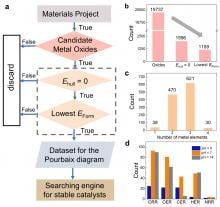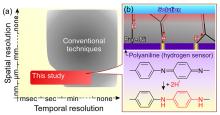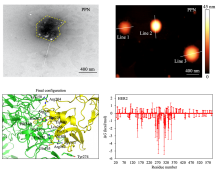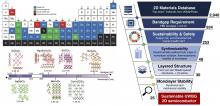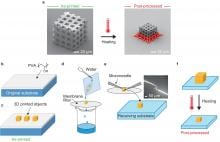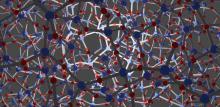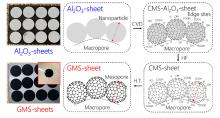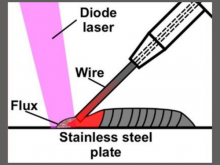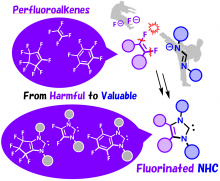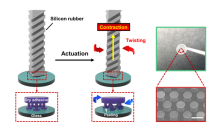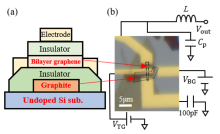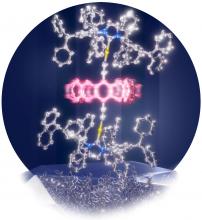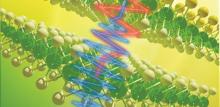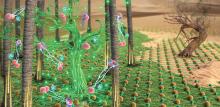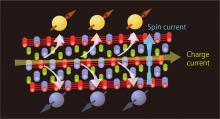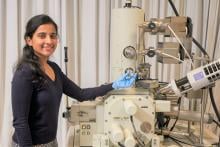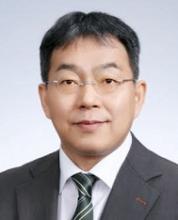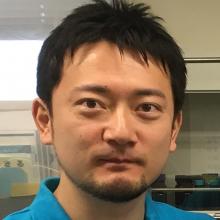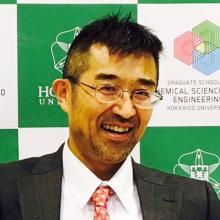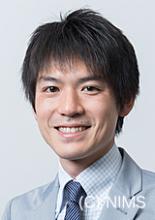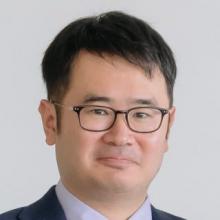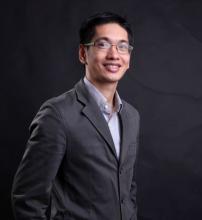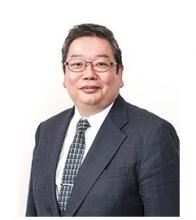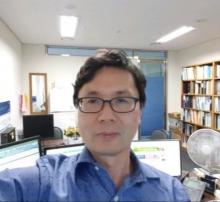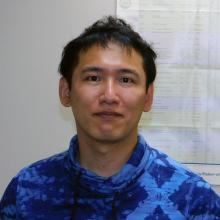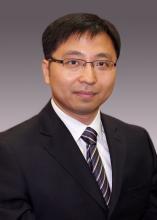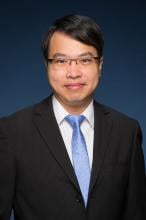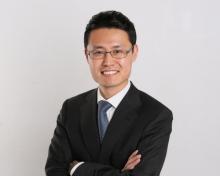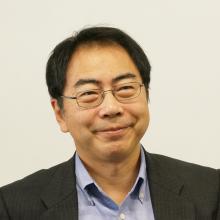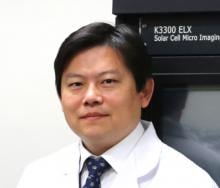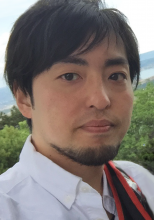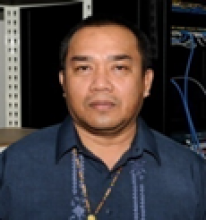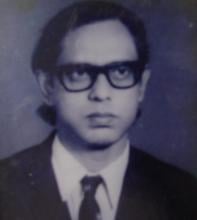Materials
News
28 Dec 2023
An international research group has engineered a novel high-strength flexible device by combining piezoelectric composites with unidirectional carbon fiber. The new device transforms kinetic energy from the human motion into electricity, providing an efficient and reliable means for high-strength and self-powered sensors.
21 Dec 2023
Identifying low-cost metal oxide electrocatalysts is essential to help us wean ourselves off fossil fuels. Yet doing so is a time-consuming process, with lots of trial and error required. A group of researchers has explored how data mining can be employed to help speed up this process.
19 Dec 2023
Using conventional X-rays and lasers to detect the atomic state of hydrogen is challenging, given its small size. A group of researchers may have overcome this barrier by unveiling a new visualization technique that employs an optical microscope and polyaniline to paint a better picture of how hydrogen behaves in metals.
19 Dec 2023
SUTD researchers developed an advanced system of breast cancer cell detection with improved speed and sensitivity, using a viral mechanism to enhance the tool’s sensing accuracy.
15 Dec 2023
A new study have compared the reinforcing efficiency of pineapple leaf fiber (PALF) and cultivated flax fiber in poly(butylene succinate) composites. PALF, a less explored but potentially sustainable alternative, outperformed flax at 20 wt.%, showcasing its potential in high-performance bio-composites and aligning with environmental goals.
15 Dec 2023
Riding the momentum of the environment-aware agenda, SUTD researchers were part of an international collaboration that developed a sustainable approach to discover and identify materials for next-generation electronics.
14 Dec 2023
In a significant advancement in optical technology, researchers from Tohoku University and Toyohashi University of Technology have developed a new method for creating transparent magnetic materials using laser heating. This breakthrough, recently published in the journal Optical Materials, presents a novel approach to integrating magneto-optical materials with optical devices, a long-standing challenge in the field.
13 Dec 2023
"Amaterasu" particle: a new cosmic mystery, Geckos inspire robotic device, Targeting cancer while protecting healthy cells, Honey, I shrunk the bear, Two species lost to science spotted again. Plus New Science Communication Resources. Read all in the latest Editor's Choice.
30 Nov 2023
SUTD researchers refine two-photon polymerisation lithography to create high-precision, nanoscale features, advancing 3D printing to enable the production of intricate components for use in high-tech applications.
21 Nov 2023
Glass is a fundamental material. Yet its atomic structure still baffles scientists to this day. Researchers have developed a new way to quantify ring shapes in chemically bonded networks of glass, chipping away at some of the mysteries behind glass’s atomic structure.
20 Nov 2023
A new technique allows researchers to map how the cellular ‘skeleton’ adapts to external stress.
17 Nov 2023
Asia Research News monitors the latest research news in Asia. Some highlights that caught our attention this week are sea cucumbers that glow in the dark, a needle that softens at body temperature, and the real size of our sun.
16 Nov 2023
Analysis of materials can be done quicker and with less expertise with the help of proven machine learning techniques established in biomedical fields
14 Nov 2023
Lithium-oxygen batteries utilize oxygen in the surrounding air to generate energy. They have shown a high degree of theoretical potential, but the technology has stymied due to the specially designed carbon cathodes lacking certain characteristics. Researchers have made a breakthrough in this regard, developing a special type of porous carbon sheet called graphene mesoponge sheets.
13 Nov 2023
Steel and aluminum are key players in supporting economic growth, yet materials joining them remain unexplored due to their fusion zones’ brittleness. A new 3D printing method’s fix may be a step toward a steel-aluminum hybrid renaissance.
13 Nov 2023
Osaka Metropolitan University researchers have successfully synthesized ligands called fluorinated N-heterocyclic carbenes (NHCs) from environmentally harmful perfluoroalkenes, a type of synthetic chemicals also referred to as PFAS. These NHCs are valuable for stabilizing unstable molecules and enhancing catalytic efficiency. Through further structural modification, these NHCs are expected to find applications in a wide range of substances, including catalysts and light-emitting materials.
10 Nov 2023
Researchers develop a technique to allow fragile objects to be transferred and released by robotics, without damage, while using a gecko inspired adhesive.
27 Oct 2023
- This team developed the PAINT technology that controls the adhesive properties of new organic materials, analyzes melanin formation processes, and facilitates selective melanin formation.
- A research paper on the technology, which fabricates local patterns based on melanin-like pigments, was published in Nature Communications, an international academic journal.
24 Oct 2023
Layered lithium cobalt oxide, a key component of lithium-ion batteries, has been synthesized at temperatures as low as 300°C and durations as short as 30 minutes.
20 Oct 2023
Graphene is often referred to as a wonder material for its advantageous qualities. But its application in quantum computers, while promising, is stymied by the challenge of getting accurate measurements of quantum bit states with existing techniques. Now, Tohoku University researchers have developed design guidelines that enable radio-frequency reflectometry to achieve high-speed electrical readouts of graphene nanodevices.
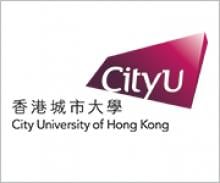
18 Oct 2023
It is estimated that over 80% of engineering failures are due to material fatigue, so the fight against metal fatigue failures continues, as this is a key parameter for lightweight structures for all mechanical systems, such as aircraft, automobile and energy-production systems. Recently, joint research by City University of Hong Kong (CityU) and Shanghai Jiao Tong University achieved a breakthrough by creating an aluminium alloy with unprecedented fatigue resistance using advanced 3D printing techniques. The new fatigue-resistance strategy can be applied in other 3D-printed alloys to help develop lightweight components with increased load efficiency for various industries.
16 Oct 2023
The latest ‘large language model’ artificial intelligence system, GPT-4, could aid chemistry researchers, but limitations reveal the need for improvements.
13 Oct 2023
Asia Research News monitors the latest research news in Asia. Some highlights that caught our attention this week are radiation blasts that come from outer space, a new way of seeing the Earth’s core, and a prosthetic socket that fills in the gaps.
05 Oct 2023
Hunting for supermassive black holes, Coastal survival at risk, Calcium and dead cell clean-up, Two naps are better than one & Pineapple leaf prosthetics. Read all in the latest Editor's Choice.

05 Oct 2023
A research team co-led by scholars from City University of Hong Kong (CityU) has successfully morphed all-inorganic perovskites at room temperature without compromising their functional properties. Their findings demonstrate the potential of this class of semiconductors for manufacturing next-generation deformable electronics and energy systems in the future.
29 Sep 2023
Concave, umbrella-like metal complexes provide space to enable the largest molecular rotor operational in the solid-state.
26 Sep 2023
An international group of researchers have proposed a new mechanism to enhance short-wavelength light (100-300 nm) by second harmonic generation (SHG) in a two-dimensional, thin material composed entirely of commonplace elements.
21 Sep 2023
A group of researchers have unraveled the mysteries behind a recently identified material—zirconium nitride (ZrN) —that helps power clean energy reactions. Their proposed framework will help future designs for transition metal nitrides, paving a path for generating cleaner energy.
21 Sep 2023
A recent discovery in spintronics could potentially transform future electronics. A group of researchers have revealed the key role of cobalt-tin-sulfur in reducing energy consumption, unlocking new possibilities for high-speed, low-power spintronic devices.
Events
Sorry, no events coming up for this topic.
Researchers
Nanyang Technological University
Dr. Sravya Tekumalla is currently a Principal Investigator in Nanyang Technological University, Singapore, where she works as a Presidential Postdoctoral Fellow. In addition, she also leads a small team of staff and students working in the domain of metal additive manufacturing (commonly known as 3D printing).
Nagoya University
Professor Kazuaki Ishihara leads the laboratory of catalysis in organic synthesis at the Department of Molecular & Macromolecular Chemistry, Nagoya University, Japan.
Dr.Ms.Aruna Dhathathreyan is a professor and emeritus scientist at the Advanced Materials Lab, CSIR-Central Leather Research Institute, India.
Hira Khalid is an associate professor at the Department of Chemistry of Forman Christian College University, Lahore, Pakistan.
Hokkaido University
Madoka Ono is an associate professor at the Research Institute for Electronic Science/Green Nanotechnology Research Center at Hokkaido University and is the principal researcher at AGC Inc. Materials Integration Laboratories.
Hokkaido University
Associate Prof. Yusuke Ishigaki is a chemist at Hokkaido University, Japan. He works on the creation of fundamental chemistry based on original molecular design.
Hokkaido University
Prof. Takanori Suzuki is a chemist at Hokkaido University, Japan. His research looks at the construction of record-breaking strained compounds and the development of unimolecular memory.
National Institute for Materials Science (NIMS)
Senior Researcher, Nano-Theory Field, First-Principles Simulation Group, International Center for Materials Nanoarchitectonics, National Institute for Materials Science, Japan.
Hokkaido University
Tsuyoshi Mita is a specially appointed associate professor at the Institute for Chemical Reaction Design and Discovery (WPI-ICReDD), Hokkaido University, Japan.
De La Salle University
Michael Angelo B. Promentilla is a Professor of Chemical Engineering and the head of the Waste and Resource Management Unit of the Center for Engineering and Sustainable Development Research (CESDR) at De La Salle University (DLSU).
Tohoku University
Tetsuo Endoh is a professor and the director of Center for Innovative Integrated Electronic Systems (CIES), Tohoku University, Japan.
Daegu Gyeongbuk Institute of Science and Technology (DGIST)
Jong-Sung Yu is a professor at the Department of Energy Science and Engineering, Daegu Gyeongbuk Institute of Science & Technology (DGIST), South Korea.
Daegu Gyeongbuk Institute of Science and Technology (DGIST)
Her current research focuses on design and synthesis of metal-organic frameworks and metal-organic polyhedra for sustainable energy and environment.
Hokkaido University
A pioneering researcher in Systems Chemistry for autonomous behavior in multi-molecular systems. The interdisciplinary field of chemistry and physics can be contributes the development in micro-robotics and comprehension of origin-of-life.
Institute for Integrated Cell-Material Sciences (iCeMS) at Kyoto University
Associate Professor of Institute for Integrated Cell-Material Sciences (iCeMS), Institute for Advanced Study, Kyoto University.
Hokkaido University
Professor, Faculty of Environmental Science, Hokkaido University
The Chinese University of Hong Kong (CUHK)
Li Zhang is an Associate Professor in the Department of Mechanical and Automation Engineering (MAE) and an associate faculty member in Chow Yuk Ho Technology Centre for Innovative Medicine (TIM) and T Stone Robotics Institute (CURI) at The Chinese University of Hong Kong (CUHK). He is also the co-director of CAS SIAT-CUHK Joint Laboratory of Robotics and Intelligent Systems.
Hokkaido University
Prof. Yuichi Kitagawa is a specially appointed lecturer at the Institute for Chemical Reaction Design and Discovery (ICReDD), Hokkaido University, Japan.
Hong Kong Baptist University (HKBU)
Dr. Zhifeng Huang is a professor at Hong Kong Baptist University, and associate director of nanomaterials at HKBU's Golden Meditech Centre for NeuroRegeneration Sciences. He co-founded Mat-A-Cell Ltd.
Hong Kong Baptist University (HKBU)
Dr. Leung is an Associate Professor and Programme Director at the Department of Chemistry, The Hong Kong Baptist University (HKBU), Hong Kong SAR, P. R. China. He concurrently holds the Honorary Associate Professorship at the Faculty of Dentistry, The University of Hong Kong (HKU). He is a Chartered Scientist, Chartered Chemist of the Royal Society of Chemistry in UK and a member in the State Key Laboratory of Environmental and Biological Analysis at HKBU. He was elected as a Founding Member of The Hong Kong Young Academy of Sciences. His research interests are in the field of supramolecular chemistry, organic materials catalysis, nanoscience, and nanomedicine.
National Institute for Materials Science (NIMS)
Materials scientist studying structure and microstructure of metal and alloys by transmission electron microscopy. Specialize in light metals and quasicrystals.
Korea Advanced Institute of Science and Technology (KAIST)
Professor in Electrical Engineering at Korea Advanced Institute of Science and Technology (KAIST).
National Institute for Materials Science (NIMS)
Current: Deputy and Administrative Director & Principal Investigator of International Center for Materials Nanoarchitectonics (WPI-MANA) .
Professor at the Graduate School of Pure and Applied Sciences, University of Tsukuba
Daegu Gyeongbuk Institute of Science and Technology (DGIST)
Prof. SU-IL IN has been working at DGIST (Daegu Gyeongbuk Institute of Science & Technology) since 2012. He served as Dean of International and External Affairs 2016 ~ 2017. He received his Ph.D. in Chemistry from University of Cambridge in 2008. Subsequently he was a postdoctoral researcher at Technical University of Denmark by 2010. Then he joined the Pennsylvania State University as a postdoctoral researcher in the Department of Chemistry before joining DGIST. Professor In’s current researches include synthesis and analysis of functional nano (bio)-materials for environmentally friendly renewable energy such as photovoltaic, heterogeneous catalysis and biocatalysts. (https://insuil.dgist.ac.kr/)
Nagoya University
Dr. Omachi is Associate Professor, Research Center for Materials Science, Nagoya University
Ulsan National Institute of Science and Technology (UNIST)
Prof. Kyoung- Jin Choi leads the Energy Conversion Materials Lab at Ulsan National Institute of Science and Technology (UNIST). He is also the editor of Electronic Materials Letters.
Korea Advanced Institute of Science and Technology (KAIST)
Prof. Oh is the director of the Creative Research Initiative Center for Functionally Antagonistic Nano-Engineering, and the director of the Active Materials and Dynamic Systems Lab at KAIST.
Professor in Agriculture and Education in the Iloilo Science and Technology University Leon Campus (ISAT U). Leon, ILOILO, PHILIPPINES
- « first
- ‹ previous
- 1
- 2
- 3
Giants in history
Abdus Suttar Khan (c. 1941 – 31 January 2008) was a Bangladeshi engineer who spent a significant part of his career conducting aerospace research with NASA, United Technology and Alstom.
Lin Lanying (7 February 1918 – 4 March 2003) was a Chinese material engineer remembered for her contributions to the field of semiconductor and aerospace materials. Lanying was born into a family who did not believe in educating girls and she was not allowed to go to school.




